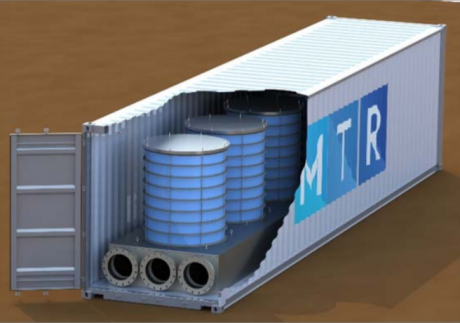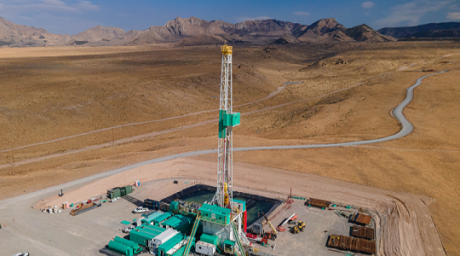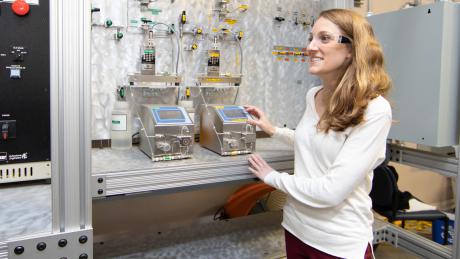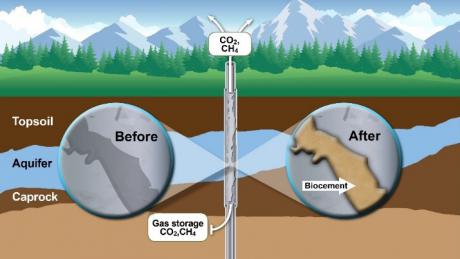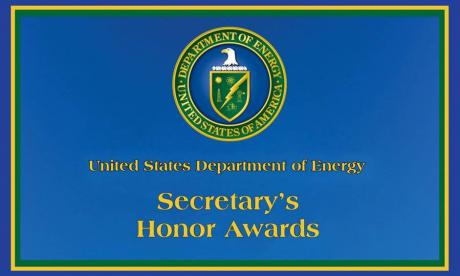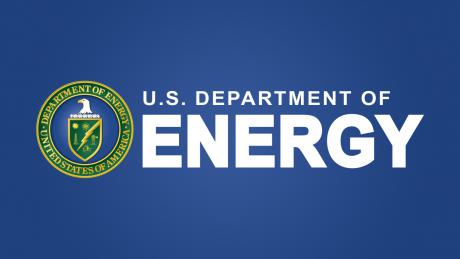The image above shows a modular container unit with Polaris membrane stacks. The CEMEX project will have multiple containers. Credit: Image provided by Membrane Technology & Research Inc.
NETL’s industry partners are evaluating the use of a transformational membrane technology to capture greenhouse gas produced during the manufacturing of cement and lower the environmental footprint for this important building and construction material.
Above: Phil Reppert training at RAX Run Eventing in Northern Virginia with Glory’s Gold, a Hanoverian horse.
In addition to his work as NETL’s Associate Director for Geological and Environmental Systems, Philip Reppert, Ph.D., has demonstrated a profound talent for horsemanship and storytelling, recently combining these two passions into writing projects, including a family-friendly novel with a message of hope during the holiday season.
The January 2022 edition of the SSAE Newsletter provides updates about recent research initiatives undertaken within NETL’s Strategic Systems Analysis and Engineering (SSAE) directorate.
Click here to access this latest edition and learn about activities that SSAE is leading to gain insights into new energy concepts, support the analysis of energy system interactions and advance its capabilities.
Highlights in this edition include:
The Energy & Geoscience Institute (EGI) at the University of Utah and the U.S. Department of Energy (DOE) Office of Energy Efficiency & Renewable Energy’s (EERE) Geothermal Technologies Office (GTO) have partnered with NETL to explore enhanced geothermal systems (EGS) via the Utah FORGE project. Once optimized and developed, electricity from EGS could power tens of millions of American homes and businesses.
As the nation’s energy sector moves toward an emissions-free future, fuel flexibility and successful integration of renewable resources will be more important than ever in designing the next generation of power plants. NETL research in energy conversion engineering (ECE) is enabling researchers to understand what will comprise the advanced energy systems of tomorrow, pioneering innovation in low-carbon power production to meet the Biden Administration’s goals of a net-zero emissions power sector by 2035 and broader economy by 2050.
The image above illustrates MICP formation in a wellbore cement defect and leakage pathway. The resulting mineral seal mitigates leakage to aquifers and the atmosphere. Reprinted from the International Journal of Greenhouse Gas Control, Vol 86.
A scientist advancing technology to recover rare earth elements, a team incorporating big data capabilities into a platform to accelerate discoveries, and researchers who developed a suite of sorbents to remove contaminants are NETL’s recipients of Secretary’s Honor Awards from the U.S. Department of Energy (DOE).
U.S. Secretary of Energy Jennifer M. Granholm noted the annual awards recognize outstanding achievements of individuals and teams who have gone above and beyond in fulfilling DOE’s mission and serving the nation.
The discovery, design and operation of modern energy systems requires systematic decision-making techniques for the often-competing goals of maximizing profits, minimizing costs and addressing market and policy drivers while also meeting environmental and technical constraints.
Today, the U.S. Department of Energy’s (DOE) Office of Fossil Energy and Carbon Management (FECM) announced up to $644,000 in funding for the University of Wyoming School of Energy Resources to assess the economic impacts of fossil energy production in Wyoming and evaluate opportunities and research needs to deploy clean hydrogen technologies. The study also will include direct outreach and engagement with local tribal nations and other traditionally marginalized groups to ensure that the study’s findings represent a diverse set of perspectives.
The December 2021 edition of the RWFI E-Note Monthly, the newsletter of NETL’s Regional Workforce Initiative, details deadline extensions for funding opportunities to establish a network of university-based, regional electric power cybersecurity centers.





